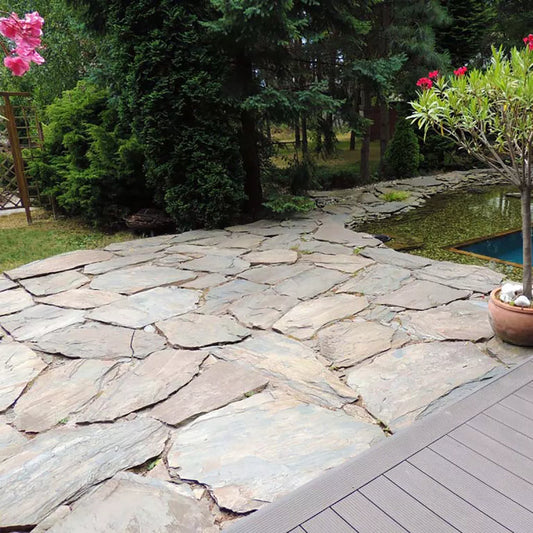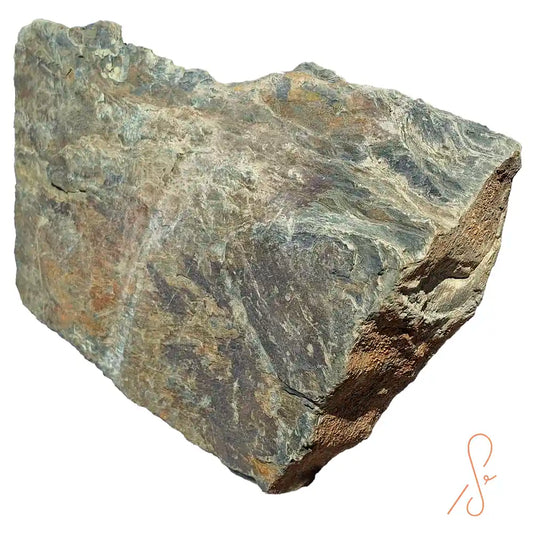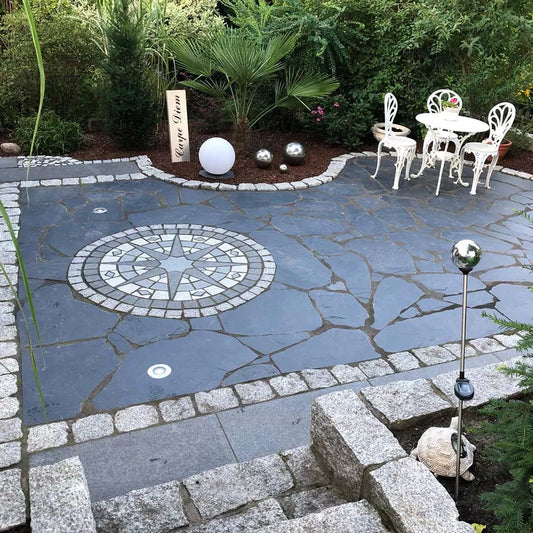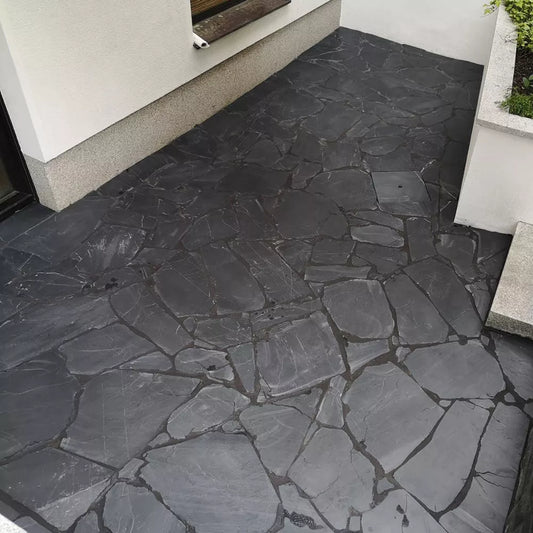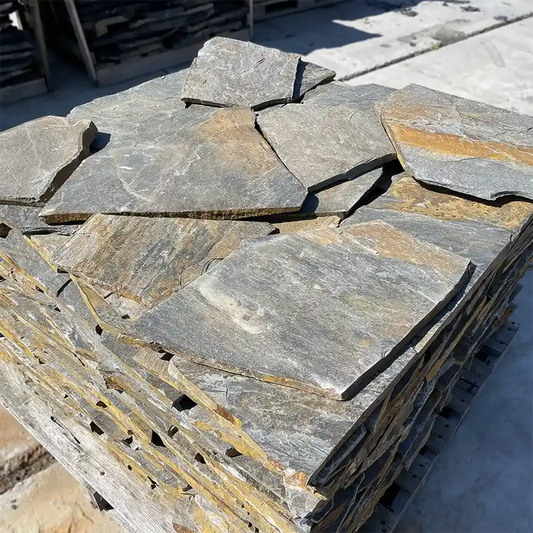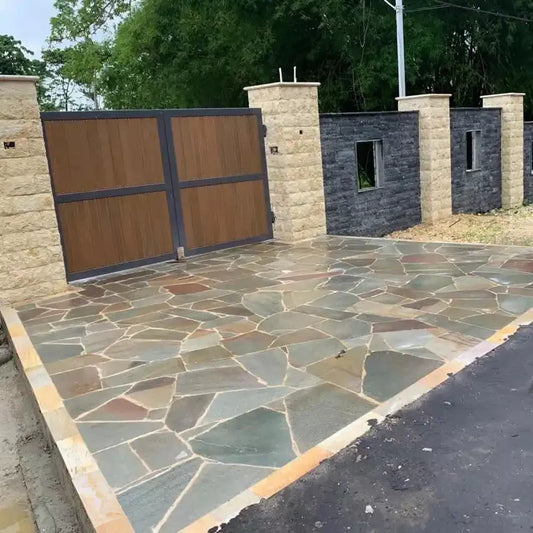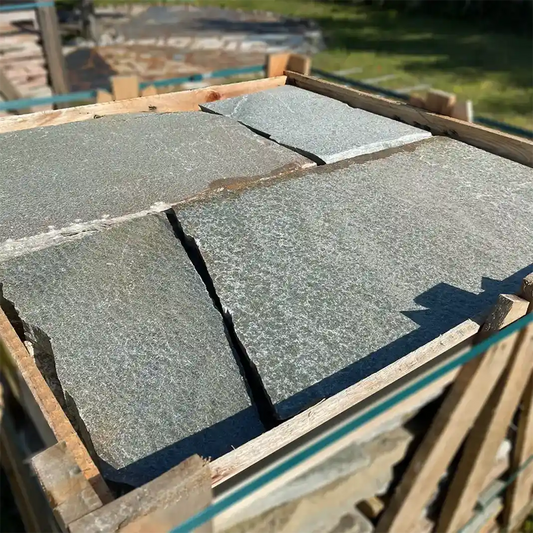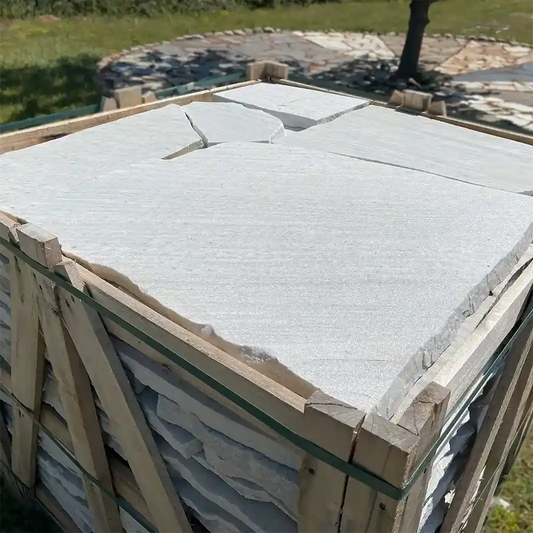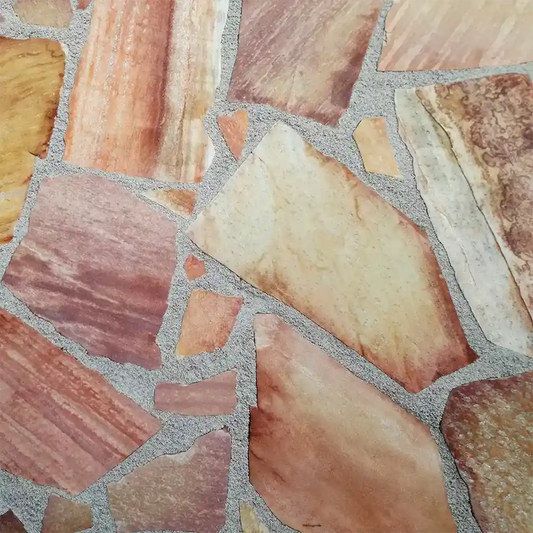
Collection: Patio slabs
Patio slabs made from various types of natural stone, such as quartzite natural stone, slate, or greywacke are valued for their special appearance and high durability. Patio slabs made of polygonal broken stones not only look natural, they are natural. In this category, we only offer patio slabs that are frost-resistant, slip-resistant, and not too thin.
Our focus is exclusively on high-quality polygonal slabs for your patio made of natural stones such as quartzite, slate, and greywacke.
Support and advice: Mon - Fri from 8 am - 4 pm by our sales representatives. Phone: +49 (0) 3332 26 70 78 27 or via email at: verkauf@bruchsteinplatten.de
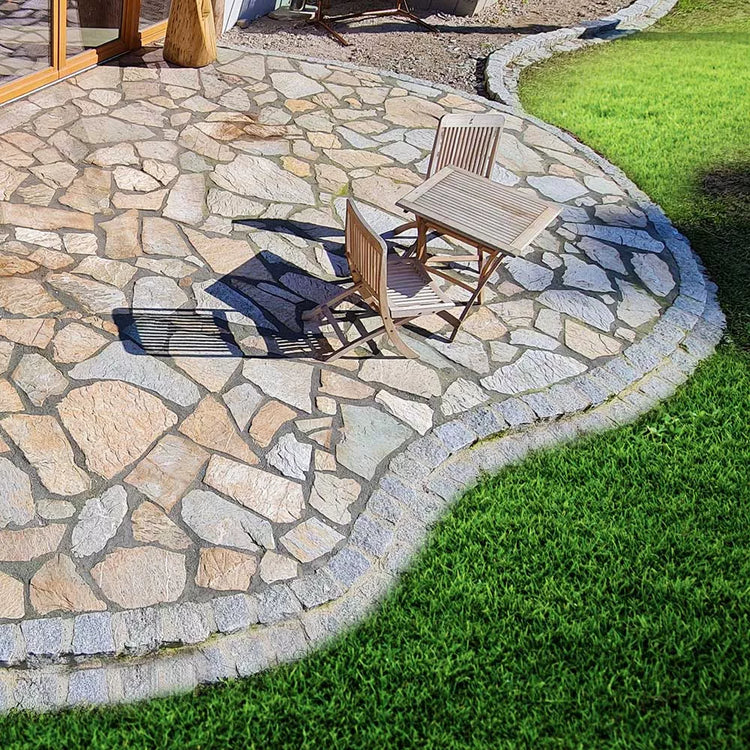
Current customer feedback
Polygonal terrace slabs - Example


Give your terrace the finishing touch with polygonal natural stone patio slabs!
Natural stone terrace slabs are a unique piece by piece and a perfect way to give your terrace and garden path the finishing touch. Available in anthracite, beige, and many other colors and shades as well as thicknesses, polygonal terrace slabs made of broken stone slabs offer a durable and attractive surface that gives the outdoor area a Mediterranean, nostalgic look. Polygonal terrace slabs are also easy to install and can be laid on a variety of substrates, including gravel, sand, and concrete. In addition, they are easy to maintain and largely resistant when pre-treated. We recommend treating the stones with a special impregnation to protect them from dirt and moisture. This provides your terrace with additional protection against weather influences and ensures a long-lasting, pleasing, and desired appearance.
-
30 m² greywacke floor slabs 6-15 cm for 138 €/m² shipping free
Vendor:bruchsteinplatten.deRegular price €4.140,00 EURRegular priceUnit price €138,00/m² -
27 m² polygonal slabs greywacke 4-10 cm for €93.50/m² free shipping
Vendor:bruchsteinplatten.deRegular price €2.524,50 EURRegular priceUnit price €93,50/m²€3.213,00 EURSale price €2.524,50 EURSale -
30 m² greywacke polygonal slabs 4-6 cm for 71 €/m² shipping free
Vendor:bruchsteinplatten.deRegular price €2.130,00 EURRegular priceUnit price €71,00/m²€2.940,00 EURSale price €2.130,00 EURSale -
30 m² polygonal slabs slate black at 56.50 €/m² free shipping
Vendor:bruchsteinplatten.deRegular price €1.695,00 EURRegular priceUnit price €56,50/m²€2.670,00 EURSale price €1.695,00 EURSale -
30 m² natural slate Scabra facade stones 1-3 cm for 55.50 €/m² shipping free
Vendor:bruchsteinplatten.deRegular price €1.665,00 EURRegular priceUnit price €55,50/m²€2.610,00 EURSale price €1.665,00 EURSale -
30 m² quartzite broken stone slabs Jasmares 2.5-4 cm for 77€/m² shipping free
Vendor:bruchsteinplatten.deRegular price €2.310,00 EURRegular priceUnit price €77,00/m²€3.270,00 EURSale price €2.310,00 EURSale -
30 m² quartzite polygonal slabs white Polaris 2.5-4 cm for 77 €/m² shipping free
Vendor:bruchsteinplatten.deRegular price €2.310,00 EURRegular priceUnit price €77,00/m²€3.270,00 EURSale price €2.310,00 EURSale -
30 m² quartzite broken stone slabs Antares 2.5-4 cm for 77 €/m² shipping free
Vendor:bruchsteinplatten.deRegular price €2.310,00 EURRegular priceUnit price €77,00/m²€3.270,00 EURSale price €2.310,00 EURSale
COMPRESA - The terrace complete package in premium quality. Everything included at an affordable flat rate. Free delivery to your doorstep.
Choose your desired color for the joint and the desired impregnation (Nature Effect or color intensifying). All necessary materials such as Polygonal slabs including 10% extra, binder, Quartz gravel, Colorquartz and impregnation are already included in this all-inclusive package.
bruchsteinplatten.de
Quartzite broken stone slabs Auralis
Share



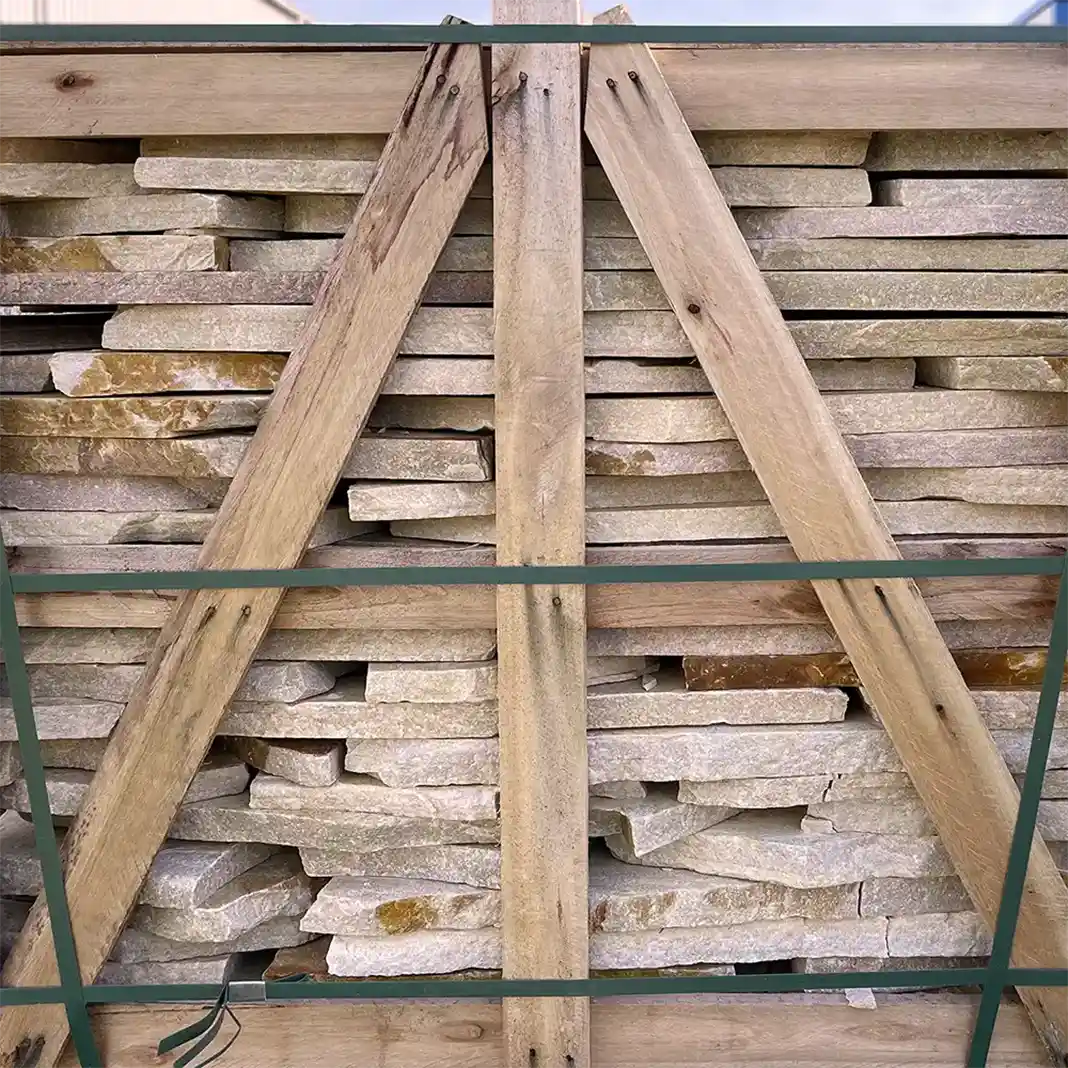


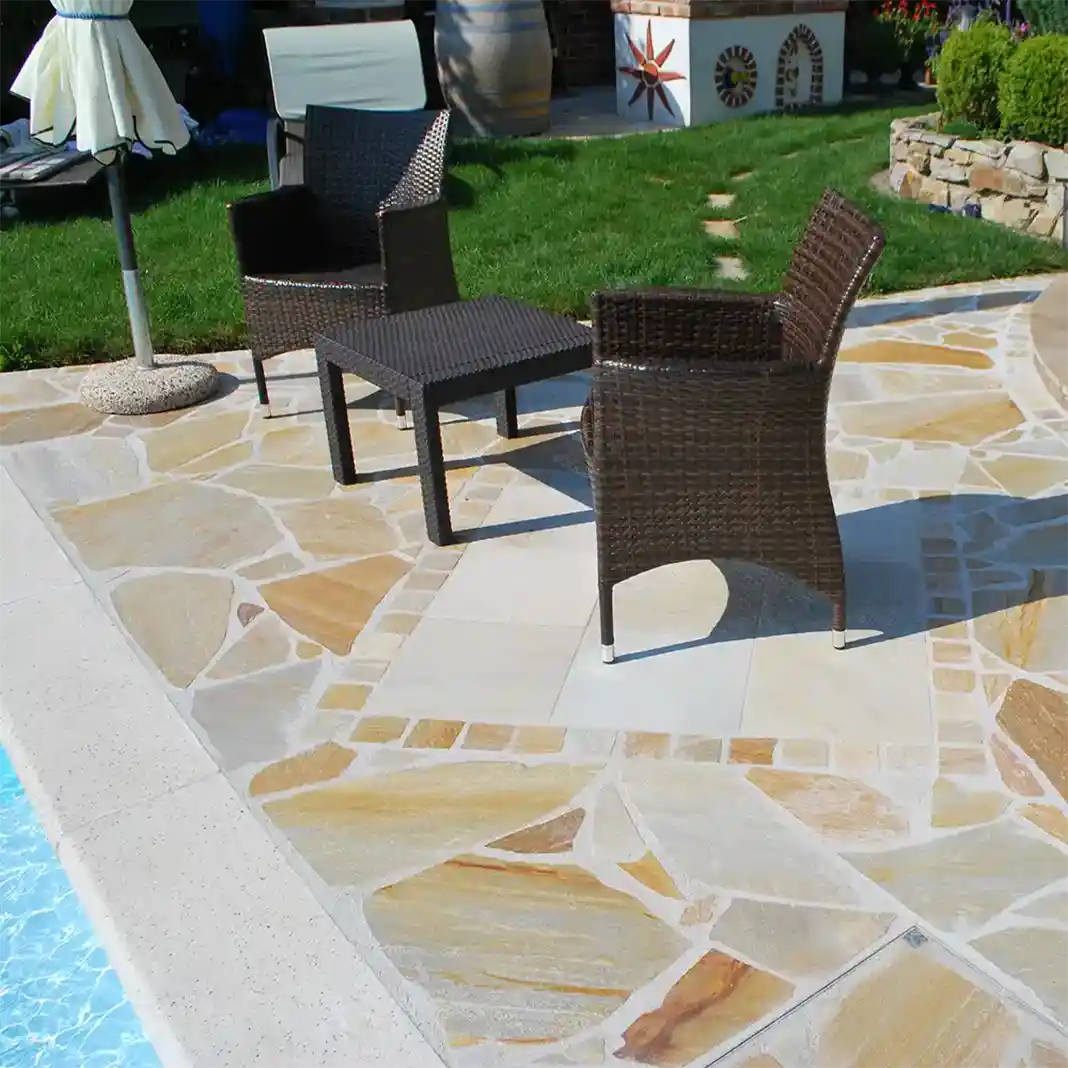

The subsoil for patio slabs must be
There are 3 ways to create a suitable base for laying terrace tiles. Here are the advantages and disadvantages:
- Lay terrace tiles loosely on gravel - The cheapest way is the so-called "Loose Fill". In this method, the natural stones are placed on a gravel or gravel bed and gravel or gravel is poured into the gaps. The disadvantage here is that you always have loose gravel on your terrace tiles, you constantly have to fill gravel or gravel into the joints. Sweeping the natural stones is therefore very laborious, as you always sweep out the loose joint material.
- Lay terrace tiles on concrete - The most elaborate way with cement or concrete. This variant requires technical know-how and practice. A slope, steel mats, and expansion joints are absolutely necessary. You have to process everything more or less immediately and quickly because concrete hardens quickly. With this solution, you do not get the right bond between natural stone and cement. Afterwards, cracks form and so-called cement efflorescences occur. Concrete is known to not be frost-proof and an unsightly cement veil forms after processing that is difficult to remove.
- Lay terrace tiles easily and by yourself with instructions. A gravel bed made of quartz gravel and epoxy resin is best suited for the base. We made sure that the quartz gravel grain size of 2-3 cm is perfectly matched to its purpose. Therefore, you do not need a slope and the water can drain into the soil. Due to the cement-free installation, you do not have to worry about cement efflorescences or broken concrete parts. This way is frost-proof, easy to maintain and clean, water-permeable, and creates an optical highlight through our colored joint quartz gravel. Great for DIY enthusiasts, home improvement enthusiasts, do-it-yourselfers, and go-getters is that you can carry out the installation completely without a specialist company. You can get advice and any support at any time from the customer advisors and gala builders of bruchsteinplatten.de. A positive aspect of this solution is that it is durable and has almost no need for repairs.
bruchsteinplatten.de
Graywacke polygonal slabs 4-6 cm
Share



How to lay polygonal patio slabs?
With our colored joint mortar based on quartz gravel and synthetic resin! Here you will find a brief guide for laying polygonal terrace slabs.
Laying terrace slabs requires some basic tools, such as rubber gloves, a shovel, a string, a spirit level, a rubber mallet, and a tape measure.
1. Prepare the base of the terrace.
Start with excavating the soil, fill it with recycled concrete, compact it with a hand tamper. The substructure must be level, load-bearing, and free of irregularities. Before laying terrace slabs, it should be leveled and smoothed. The terrace slabs are then finally positioned on the quartz gravel bed, see point 3.
2. Lay out the terrace slabs.
The terrace slabs must be positioned to create a uniform, appealing pattern. When placing the terrace slabs on the substructure (quartz gravel with synthetic resin), the joints should be approximately 4-8 mm wide. The terrace slabs will be laid on the quartz gravel bed. The slabs must be laid horizontally and row by row. When laying the slabs, the joint widths and depths must be maintained.
3. Finally lay and secure the terrace slabs.
To prevent the synthetic resin from hardening before laying, we recommend working square meter by square meter during installation. That means you mix enough quartz gravel and synthetic resin for about 1 sqm and lay your natural stones within a time frame of a maximum of 1 hour per square meter. This is stress-free, you make progress step by step and can easily manage your time without external factors complicating your work. To secure the terrace slabs, apply some synthetic resin to the underside before laying, preferably strip off excess and not dripping with a brush. With gentle pressure and a rubber mallet, finally secure the polygonal terrace natural stones in the substructure mixture.
4. Fill the joints.
Before grouting, we recommend impregnating the stone slab surfaces. Very important here, do not impregnate the edges as otherwise no bond can be created between the joint and the stone edge. The joints of the terrace slabs are filled with the joint mortar-synthetic resin mixture. It is important that the joint mortar mixture meets the requirements of the slab manufacturer. All stones from bruchsteinplatten.de work hand in hand with the quartz gravel-synthetic resin mixture.
5. Seal the terrace slabs.
To protect the terrace slabs from dirt and water, they should be impregnated and sealed. Special impregnating and sealing agents can be used for this purpose.
Patio slabs joint mortar available in 14 different colors
Combine your desired patio slab to your heart's content with our Color Quartz. Currently, we have 14 colors available in the online shop. Feel free to contact us if you are interested in a different color or combination.
REQUEST FOR YOUR TERRACE PROJECT
HOW TO REACH US PERSONALLY
Support and advice from Monday - Friday from 8 am - 4 pm
Phone: +49 (0) 3332 26 70 78 27
or by email at: verkauf@bruchsteinplatten.de
FAQ - Answers to frequently asked questions about polygonal natural stone terrace slabs

Which patio slabs are easy to maintain?
The best easy-care patio slabs are polygonal slabs made of quartzite and greywacke. We generally recommend impregnation to protect the surfaces. Otherwise, they are very easy to care for and require only a minimum of maintenance. Patio slabs are durable, resilient, and can be used without hesitation in all climate zones.
Which patio slabs should you buy for outdoor use?
There are many different types of patio stones for outdoor use. Some are made of natural stone, others of concrete or plastic. It depends on which look and style you prefer. Some patio stones have a smooth surface, while others have a rough, textured surface. If you are looking for a durable and long-lasting option, polygonal split-faced natural stone slabs are a good choice for outdoor use. They are natural, durable, sturdy, and easy to maintain. Bruchsteinplatten.de offers a wide range of high-quality natural stones in various colors and shapes with free shipping. Our gray and blue tones Grauwacke, gray Quartzite patio stones, beige/yellow to rust red tones, and of course our natural slate patio stones in 3 different natural stones from black to anthracite, red to beige tones.
How much does it cost to have patio tiles laid?
This depends on many different factors, such as the size of the terrace, the material of the terrace tiles, and the type of installation. Typically, the costs for laying terrace tiles range from 90 to 150 euros per square meter.
Which joints for patio slabs?
There are different types of joints for terrace tiles. It is usually recommended to use a joint width of 5-10 millimeters to achieve optimal water permeability. A variety of joint mortars are available on the market, including plastic and acrylic joint mortars, as well as natural stone and concrete joint mortars. It is recommended to use a joint mortar suitable for outdoor use. Based on successful laying practices, we exclusively offer joint mortar made of quartz gravel with synthetic resin, as it is water-permeable, frost-resistant, and free of concrete.
Who lays terrace slabs?
Terrace slabs are usually laid by professional landscapers. However, they can also be laid by yourself if you have the necessary skills and tools. We are happy to support you with instructions and advice from our experts. The cement-free installation with quartz gravel and synthetic resin is a variant that can be successfully completed by hobby craftsmen and DIY enthusiasts.
How should the subsoil be prepared for patio slabs?
The substructure for terrace tiles should be level and load-bearing. It is ideal to use a so-called concrete recycling layer (approx. 10 cm) to support the tiles and prevent them from sinking. In addition, a layer of quartz gravel and synthetic resin (build-up height of 3 cm) should be applied to create a level surface for laying the tiles and anchoring them securely.



